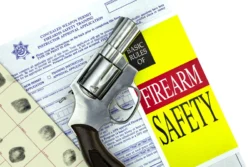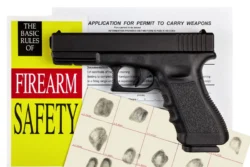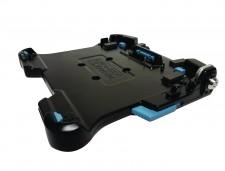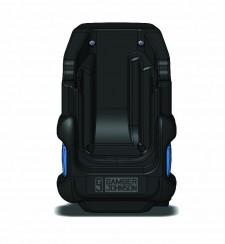You can find no pedestrians signs posted around the city in areas with high traffic. It also helps prevent jaywalking incidents and possible accidents.
The straightforward message allows immediate comprehension, eliminating any misunderstanding and enhancing safety. These signs are available in a variety of sizes to suit your specific location. Choose from aluminum for durability and resistance to the elements, plastic for a cost-efficient option, or wood for a more natural aesthetic.
No Pedestrian Signs Help Prevent Accidents and Injuries
Pedestrians are vulnerable to traffic accidents and injuries because the metal shell of a vehicle does not protect them. Each year, there are about 5,000 pedestrian deaths and 800 bicycle fatalities. In addition, many other pedestrians are seriously injured in roadway accidents. This is why it is so important for everyone to obey the rules of the road, pay attention to their surroundings, and keep their distance from other vehicles.
It is also essential for drivers to respect all traffic signs and signals, especially those warning of the presence of pedestrians. In fact, disobeying these types of warnings can lead to serious accidents that cause injuries and property damage.
For example, pedestrians are not allowed to cross the street at an intersection without a traffic light or other control devices, such as a crosswalk. Those who ignore these rules may be struck by a passing car or bicycle. Additionally, drivers should always adhere to speed limits and come to a complete stop at STOP signs.
In addition, pedestrians are not permitted to walk in the travel lanes of limited-access roads such as expressways or interstate routes. They should instead utilize the pedestrian refuge islands that are located between the different directions of traffic. This way, pedestrians can focus on traffic coming from just one direction at a time.
While it may be tempting for some pedestrians to walk across the street at non-signalized intersections, this type of behavior is dangerous and could result in a serious accident. In most locations, pedestrians are allowed to start crossing the street at a controlled-access intersection only when a steady WALK indication is displayed. If the WALK indication is removed, the pedestrian must wait for a DON’T WALK display to continue crossing the street.
The same goes for a pedestrian who is crossing the street at a marked or unmarked crosswalk. A steady DON’T WALK display means the pedestrian must stop and wait until a WALK indication is displayed again. Likewise, pedestrians should never cross the street at an intersection when a red light is flashing. Those who do so may be hit by a vehicle making a right turn.
They Contribute to Legal Compliance and Liability Prevention
A No Pedestrians sign serves as an effective reminder to pedestrians that they should not enter or walk in specific areas. This prohibition message can help prevent liability issues and other complications that might arise from unauthorized access by individuals on foot. The high visibility signs are ideal for construction sites, private properties, and other hazardous zones where pedestrians may not be safe or allowed to enter.
The No Pedestrians Sign is one of several types of warning or restriction signs. The other types include the STOP, YIELD, CROSSWISE, and DO NOT ENTER signs. The No Pedestrians Sign is part of the Regulatory Category of signs and comes in the standard color scheme of red, white, and black for prohibition messages.
Regulatory signs are designed to help traffic flow smoothly and safely. Typical regulatory signs are rectangular or square in shape and feature a black design of a symbol printed on the center. Some are also triangular in shape, like the STOP and YIELD signs. These signs have a white top bar and a red bottom bar, and they are usually posted at locations where it is important to slow down on approach and yield the right-of-way to pedestrians and cross traffic.
For example, a CROSSWISE sign is usually posted in school zones, and it indicates that you should slow down on your approach and watch for children crossing the road. A DO NOT ENTER sign is similar to a STOP sign, but it warns drivers that they must not proceed through the intersection at the indicated location. A YIELD sign indicates that you must yield to traffic that is already in the intersection and wait until it is safe to cross.
Whether it is a No Pedestrians sign or another regulatory sign, these signs serve to promote safety and ensure compliance with local and national laws. Often, these types of signs are installed by city and state transportation authorities in order to reduce the number of accidents and injuries that might occur on roadways. They are also a vital tool to help businesses maintain security and privacy by restricting pedestrian access to their facilities.
They Help Maintain Security and Privacy
No Pedestrians Signs provide clear and visible warnings to people not to enter or walk in specific areas such as private properties, industrial sites, hazardous zones, and more. These signs help to establish boundaries and control, preventing unauthorized pedestrian access, which may disrupt workflow, compromise productivity, and create safety hazards. By prominently displaying No Pedestrians Signs, it is easy to communicate this message, prevent potential incidents or conflicts, and ensure that the correct protocols are followed at all times.
When a pedestrian traffic signal displays the white walking symbol or upraised hand, it indicates that pedestrians may start crossing the road. However, you must remain in the crosswalk if the steady “Don’t Walk” or flashing orange hand symbol appears. Pedestrians who are already in the middle of their crossing should continue to the other side of the street. If you are still in the middle of your crossing and the WALK signal is off, wait until the next “Walk” cycle to resume your journey across the roadway.
Some vehicles may not see a pedestrian in the crosswalk when you are at an intersection, so it is important to always look left and right before you step out into traffic. Also, make sure to give yourself enough time to safely cross the road, as some groups of pedestrians, such as seniors or people with children, need more time than others to cross.
Similarly, pedestrians should walk on the sidewalk when possible and be aware of parked cars that may block your view of approaching traffic. If there is no sidewalk, it is best to walk on the road shoulder facing oncoming traffic to stay safe from passing vehicles. Moreover, if you encounter a school bus stopped at a bus stop, be mindful of the pedestrians nearby and yield to them as they are likely in a hurry. In addition, if you are driving through a roundabout, it is important to keep an eye out for directional arrows that indicate the direction of traffic on each lane. It is also recommended to slow down or stop at the roundabout’s T-intersection and follow the directions of the corresponding arrow on the road.
They Serve as a Visual Deterrent
The No Pedestrians Sign is an important visual deterrent that prevents pedestrians from entering or walking in areas where access is restricted. Featuring high visibility colors of red, white, and black, these prohibition signs clearly communicate to individuals that they are not allowed in specific locations such as private property or hazardous zones. By displaying these warnings prominently, they serve as a clear reminder that pedestrian access is prohibited and help to reduce potential accidents or conflicts between people on foot and vehicles.
As a general rule, pedestrians must always obey traffic signal lights and signs, even when they are not explicitly addressed to them. This is because the right-of-way rules of the road apply to pedestrians as well as cars and other motorized vehicles. This includes looking left, right, and up before crossing the street or roadway. It is also a good idea to listen for engine noise or backup lights from vehicles in parking lots or nearby streets and to cross only when it appears safe to do so.
It is also crucial that pedestrians obey pedestrian traffic signals, which usually consist of a steady WALK display or symbol of a walking person and a flashing DON’T WALK display or upraised hand symbol. If you are in the process of crossing during the WALK indication, it is permissible to continue across as long as you do not start again until the signal changes to DON’T WALK.
Other types of pedestrian traffic control signage include the Rectangular Rapid Flashing Beacon, which alerts drivers to a pedestrian crossing ahead and is often used at intersections without dedicated pedestrian crossings. This type of signal is often combined with educational plaques that explain to pedestrians what the various signal displays mean.
Other types of traffic control signage that indicate pedestrians must be wary include the Left Turn Yield on Green Sign, which warns drivers to yield to people on foot before turning left at a traffic light. Another important type of warning signage is the Railroad Crossing Ahead Sign, which indicates that there is a railroad crossing ahead and should prepare to slow down or stop on short notice.







